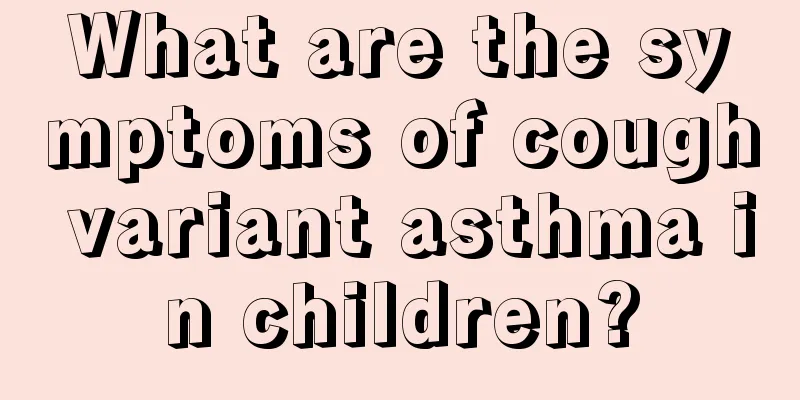Can children with cerebral dysplasia undergo surgery?

|
Every baby means a lot to a family from the moment they are born. Every parent hopes that their child can grow up healthily, but not every baby can be so lucky. Many babies have brain maldevelopment from the moment they are born. So, can surgery be performed for brain maldevelopment? The answer to this question is yes, but it doesn’t mean much. Cerebrovascular malformation, also known as hemangioma, is not a true tumor. It is a congenital abnormality of cerebral vascular development. There are many types clinically, among which arteriovenous malformation is the most common. According to the size of the diameter of the abnormal vascular mass, it is clinically divided into large, medium and small lesions. This disease is more common in men and young people. The most common clinical manifestation is rupture and bleeding of abnormal blood vessels. In some patients, epilepsy is the first symptom. Due to the "blood steal" phenomenon, localized cerebral ischemia can cause brain atrophy, intellectual impairment, and mental disorders. If the bleeding is severe and brain herniation occurs, it can often be fatal if not treated promptly. There are many treatments for this disease, among which surgical removal of the source of the disease is the most ideal. Intravascular interventional therapy and gamma knife therapy is a new treatment method. Clinical manifestations 1. General symptoms: throbbing headache, located on the affected side, may be accompanied by intracranial vascular murmurs. 2. Bleeding: It is often the first symptom, manifested as subarachnoid hemorrhage or intracerebral hematoma. 3. Epilepsy: It may be the first symptom or occur after bleeding. It is usually a generalized or localized seizure. Localized seizures have localization significance. 4. Local symptoms: Patients with supratentorial lesions may have mental abnormalities, hemiplegia, aphasia, alexia, acalculia, etc. Those under the tentorium often experience dizziness, diplopia, nystagmus and unsteady gait. Diagnosis 1. Adolescent patients with a history of headache, epilepsy and subarachnoid hemorrhage. 2. Patients with clinical manifestations of acute spontaneous intracranial hemorrhage, epileptic seizures, or obvious local signs. 3. Head CT: On plain scan, lesions are often low-density and have low-density surrounding areas. If there is intracerebral hemorrhage, high-density can be seen. After enhancement, the vascular area shows high-density, and sometimes the supplying arteries and draining veins can be seen. 4. Head MRI: It is superior to CT in that it can not only show abnormal blood vessels and surrounding brain tissue, but also distinguish between hemorrhage and calcification. MRI angiography can improve the diagnosis rate of abnormal vascular masses. 5. Cerebral angiography: the most reliable and important diagnostic method. In the arterial phase, vascular masses, supplying arteries and early-appearing drainage veins can be seen. Treatment principles 1. Surgical treatment. 2. Intravascular interventional treatment. 3. Stereotactic radiotherapy (γ-knife, X-knife). 4. Treatment of spontaneous bleeding. 5. Treat symptomatically. Medication principles 1. For patients with spontaneous bleeding, 6-aminocaproic acid and other hemostatic drugs should be used immediately. 20% mannitol or furosemide should be used mainly to reduce intracranial pressure. Human albumin can be used if necessary. 2. Epilepsy: A long-term systematic treatment. Depending on the type of epilepsy, the following drugs are used: phenytoin sodium, sodium valproate, carbamazepine, etc., and barbiturates are used when necessary. 3. Symptomatic and supportive treatment. Testing 1. Skull X-rays showed erosion of the intracranial plate and tortuosity and widening of the middle meningeal artery, suggesting the possibility of vascular malformation. 2. Head CT can detect hematoma and provide the possibility of vascular malformation. 3. Head MRI: It is superior to CT in that it can not only show abnormal blood vessels and their relationship with surrounding brain tissue, but also distinguish between hemorrhage and calcification. 4. Cerebral angiography is the most reliable and main diagnostic method for this disease, and can also perform intravascular interventional treatment. Efficacy evaluation 1. Cure: No recurrence after malformation vessel resection or embolization, symptoms disappear, and normal work and life are resumed. 2. Improvement: Most of the abnormal blood vessels are removed or embolized, and the symptoms are alleviated. 3. Not healed: The malformed blood vessels are not treated and the symptoms do not improve. The above explains the pros and cons of the question of whether surgery can be performed for cerebral dysplasia. If there are mothers and fathers who want to have surgery for their babies, they can weigh the pros and cons. As we all know, any surgery has certain risks, so the best way is conservative treatment, which can at least ensure the safety of children's lives. |
<<: Is it good for girls to learn Go?
>>: Is it good for children to learn Taekwondo?
Recommend
How to treat peeling of the fingertips in children
The growth of a child affects the hearts of many ...
Symptoms of stomach flu in children
Many people will find in life that children’s gas...
What are the transparent blisters on the newborn's forehead?
Many newborns will have small blisters on their h...
Can a 7 month old baby eat yogurt?
Strictly speaking, yogurt is a fermented beverage...
Why does my baby have a cold, cough and diarrhea?
Many parents will have questions about what is go...
What does it mean when my baby’s blood lymphocyte count is high?
Every baby can be said to be the treasure of the ...
One year old baby's hands peeling
Babies need to absorb nutrients through food from...
What are the dangers of tooth decay for two-year-old babies?
It is normal for children to have cavities. Cavit...
What should I do if my baby has bloating and constipation?
It is a very common phenomenon for adults to have...
What's wrong with children's eye mucus?
Eye boogers are a substance secreted by the eyes....
How to treat cerebral hypoxia in children?
The difference between humans and animals is that...
What is the best way to treat anal fissure in children?
Children are more likely to have intestinal probl...
What causes high blood lipids in children?
Middle-aged and elderly people are prone to hyper...
Common precautions for children rafting
We also know that young people in the 21st centur...
Is it OK for children to lose their teeth prematurely?
Tooth loss is a stage that every child goes throu...









